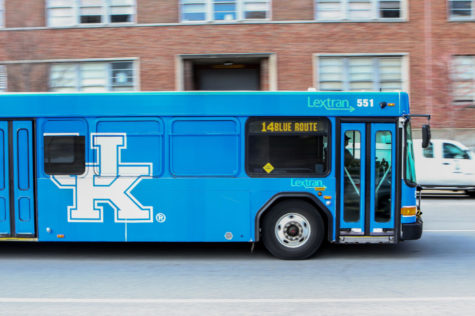Solar car to journey 2,400 miles without stopping for gas
July 10, 2008
With gas at $4 a gallon, it would cost about $533 to travel from Dallas, Texas to Calgary, Alberta, Canada.
But this month, students from UK’s College of Engineering will make the trip without using a single drop of gasoline.
Led by project manager Matt Hatfield, engineering students will compete in the North American Solar Car Challenge, where 24 cars from around the world, including one from UK, will race 2,400 miles from Dallas to Calgary.
The car, Gato del Sol III, was completely engineered by students in the College of Engineering and over the next week it will be proving its mettle by contending in the 2,400-mile endurance test. Competition aside, the team’s goal this year is solely to complete the race.
“I don’t care if we come in dead last,†Hatfield, a mechanical engineering senior, said. “If we cross the finish line we’ll have done better then we ever have before.â€
UK entered the competition in 2003 and 2005, but both times failed to make it through the preliminary phases of the competition. The first phases, called scrutineering, include rigorous safety testing and inspections to make sure that the car is up to snuff and meets regulations, Hatfield said.
“In 2003 we never expected to make it to the race, we were just there mainly to learn from the other teams,†said Scott Stephens, a professor of mechanical engineering at UK.
The new car is modified from the earlier version: the chassis has been redesigned, a significantly improved safety system has been added and new lithium polymer batteries now run the car, Stephens said.
The Gato del Sol III completed the scrutineering phase yesterday and will be the 6th best car entered in the race. Today it will be competing in a road test at the Motorsport Ranch in Cresson, Texas before finally being allowed to hit the highway on Sunday.
The trip will take 10 days and avoid major interstates. All cars will be accompanied by a lead and tail car staffed by the support team who are equipped to handle anything from a flat tire to a battery overload, Stephens said.
The Gato del Sol III is capable of generating 3 horsepower worth of energy, which can power the car to a maximum speed near 65 miles per hour.
“It’s a lot of fun to drive,†said Nick Such, a mechanical engineering senior, “the car doesn’t have power steering, so it can be hard to turn when you’re going 55, but because it’s a three wheeled car it actually handles better than any other car I’ve driven.â€
Even with the advancements and modifications to the car, Hatfield said mass-producing solar cars isn’t a possibility for the near future.
“Solar energy still isn’t a feasible alternative for conventional gasoline powered cars right now,†Hatfield said, adding that the panels of solar cars are expensive and fragile.



















































































































































